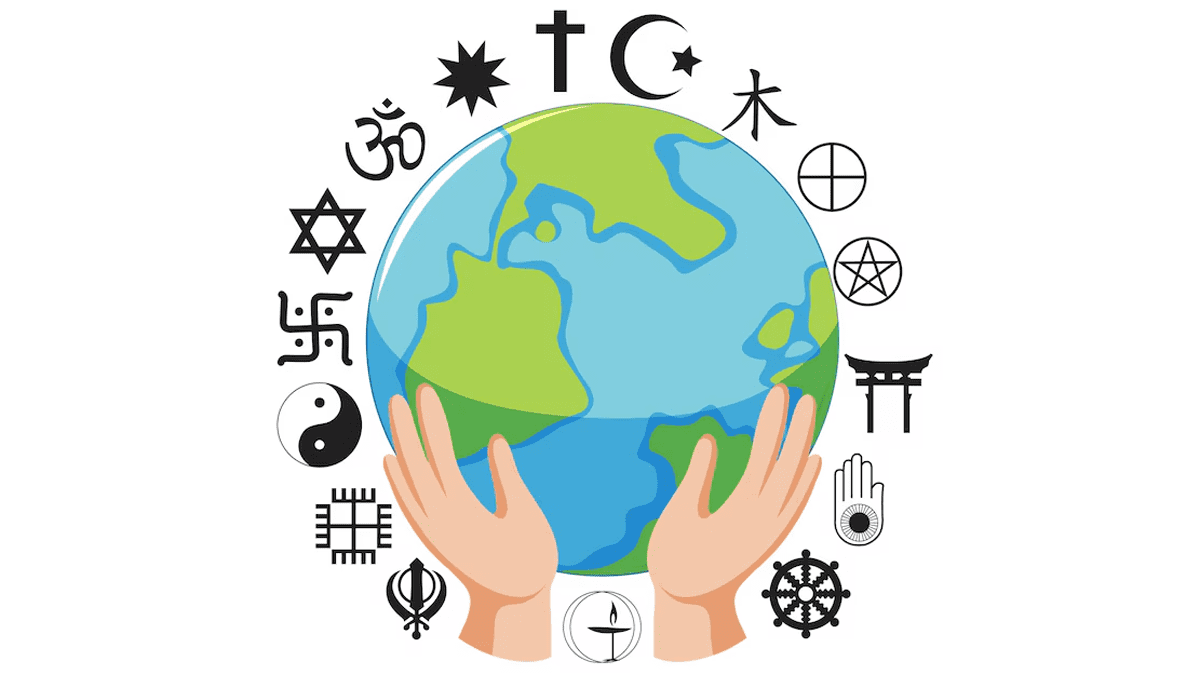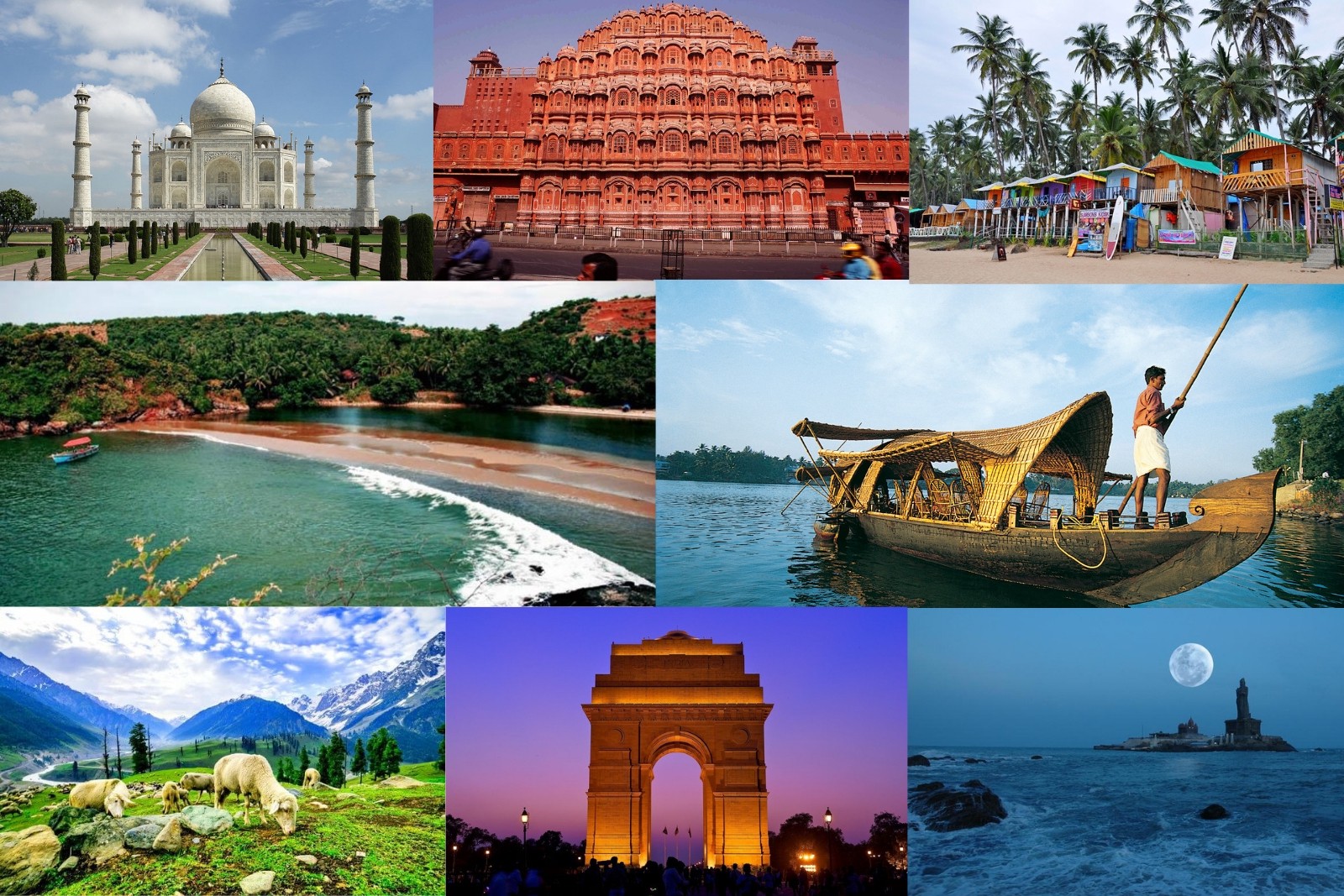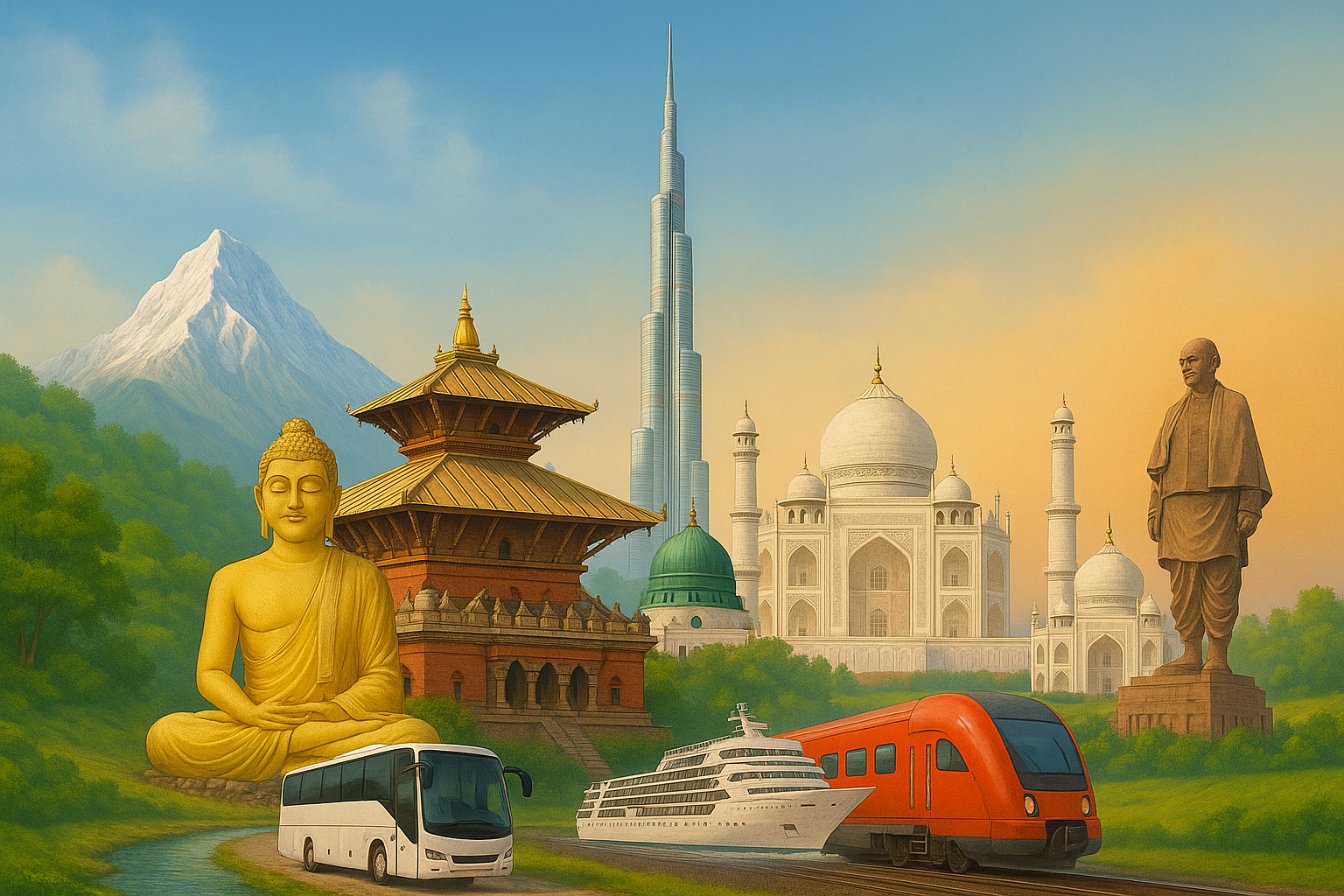Each religion has its symbol. Some of them have sacral meaning, others are connected with religion only indirectly. In this article, we will tell about the history and meaning of the symbolism of world religions and their place in modern culture. After all, it is significant enough.
Modern brands express their concepts and follow consumer preferences by borrowing religious symbols, and using them in their products and advertising campaigns. The use of religious symbolism becomes part of the process of adapting the traditions of modern society, or it becomes a subject of use by mass, sub-, and counter-cultures in avant-garde forms of presentation. Let us look at the question in more detail.
The Fundamental Meaning of Religious Symbols
A symbol is a sign. What it signifies is not any definite idea. We cannot say that the serpent, as a symbol, means only: “wisdom,” and the cross, as a symbol, only “the sacrifice of atoning suffering.” Otherwise, a symbol is a simple hieroglyph, and the combination of several symbols makes up a figurative allegory, a cipher message to be read using a found key.
At all times the symbols of religions displayed the abstract concept of God, which is something incomprehensible to man. The main task of numerous symbols of all world religions is a visible image of the Supreme Powers using allegory. Symbols of religions help believers to realize and deeply understand their faith, they connect the meaningful perception of faith with the emotional one. All our life is surrounded by many different symbols, but the difference between religious symbols is that they have great power as they express moral values and relations of the highest order.
The essence of religious symbols defines dogmatics and the orientation of belief. All symbols have their roots in pre-Pagan times when the world was ruled by the energy of subconscious impulses. Along with the main symbols, each religion has many other images, which together create a complete emotional image for the believer.
In our time three main religious directions are known – Christianity, which is 2000 years old, Islam – 1400, and Buddhism – 2500. And each of them is accepted all over the world. There are also other religions that are widespread but are not world religions. Each of them has its special symbols, and we will talk more about the most famous ones below.
Christianity: The Cross
At the dawn of Christianity, the symbol of the new religion was a fish (ichthys). The first letters of the word ΙΧΘΥΣ (Greek for “fish”) are an acronym for the phrase “Ἰησοὺς Χριστὸς Θεoὺ ῾Υιὸς Σωτήρ” (Jesus Christ the Son of God the Savior).
As Christianity deepened, its main symbol became the cross – symbolizing the martyrdom of Christ. According to a legend, in 326 the Byzantine Queen Helena discovered an authentic crucifix. After this event, the cross became the main symbol of Christianity. It began to be erected on the domes of churches and written on icons.
However, it is worth noting that the symbolism of the cross was used in various pagan beliefs long before the advent of Christianity. This is confirmed by archaeological findings around the world.
The Christian cross has many variations. The English word “cross” comes from the Latin “crux”, meaning “wood, gallows or other wooden instruments of execution”. The corresponding verb “cruciate” means “to torture, torment”.
The Orthodox cross differs from the Catholic cross and consists of four crossbars. The small horizontal crossbar symbolizes the tablet with the inscription “Jesus of Nazareth King of the Jews”. The oblique crossbar symbolizes two robbers crucified next to Jesus, where the upward pointing end of the crossbar represents the forgiveness of them, and the downward pointing end of the crossbar represents the second, who went to hell. Another version, however, says that the crossbar is simply a stop for the feet of the crucified, which prevented him from dying immediately after the execution.
The cross is a universal symbol. It was made so by the simplicity of its inscription, which gives room for the play of imagination and fantasy. But it may affect some unconscious levels of the psyche. This sign can not be attributed to neutral.
Also, the Cross often acts as a model of man or anthropomorphic deity – the anthropomorphocentricity of the Cross and the “cross-shaped” nature of man with outstretched arms is constantly played out in ritual, folklore, mythological, and religious stories. At the same time, the cross models the spiritual aspect: the ascent of the spirit, aspiration to God, to eternity.
Islam: The Crescent
The world religion Islam was founded by the prophet Muhammad in the 7th century. The main holy book of Muslims is the Koran. The very concept of Islam is translated as “peace and obedience to God”. Muslims honor one God – Allah and believe that the Koran was given to the prophet Muhammad by the archangel Gabriel.
At the initial stage of the formation of Islam, there were no special symbols in it. As such, monochrome banners of white, black, or green color were usually used.
There is a beautiful legend according to which Prince Osman saw in a dream a crescent moon stretching from one end of the sky to the other. He considered it a good omen and made it the symbol of his dynasty.
In fact, the crescent moon with a star was the symbol of Constantinople for a long time. In 1453, the Ottomans conquered the Byzantine capital turned it into a sign of military victory, and later began placing it on mosques to distinguish them from Christian churches.
Today, the symbol of Islam is the crescent moon and the five-pointed star. The five-pointed star signifies the five pillars of Islam, or the five main prayers, and the crescent moon signifies adherence to the lunar calendar.
The star and the crescent are widespread throughout the ancient world, in the Eastern Mediterranean and Central Asia. However, the attitude to the crescent moon among the adherents of Islam is quite contradictory. Some often reject the crescent moon, considering it a pagan symbol of ancient peoples.
But for most, the Emblem, consisting of a crescent moon and a star, signifies divine protection and rebirth. The Crescent Moon symbolizes the power to resist evil and is a powerful talisman, while the Star is a symbol of independence and divinity.
Buddhism: The Dharma Wheel
One of the world’s oldest teachings is Buddhism, which was founded by the Indian prince Siddhartha Gautama. The symbolism of Buddhism is quite multifaceted. It expanded as the religion spread and came into contact with other cultures.
The oldest and most important symbols of Buddhism are the Dharmachakra, the Dharma Wheel, or the Wheel of Law. The wheel itself represents the law of the universe, and the eight spokes in it symbolize the components of the eightfold path to enlightenment – view, thinking, speech, behavior, lifestyle, effort, awareness, and contemplation. In the center of the wheel is a hub, symbolizing the point of consciousness.
Sometimes two gazelles are depicted on the sides of the wheel, which is a symbol of Buddhist preaching. This is due to the legend that the Buddha’s first sermon was heeded by these animals as well.
Buddhists believe that when Siddhartha Gautama attained enlightenment, Brahma gave him this wheel to lead others to enlightenment.
Judaism: The Star of David
The symbol of the six-pointed Star of David (hexagram) has an older origin than Judaism itself. This symbol became Jewish only in the XIX century. The same sign of the hexagram was known in India under the name Anahanta-chakra, probably long before it appeared in the Middle East and Europe.
There are different versions of the origin of the name of the symbol, from linking it to the legend of the shape of the shields of the soldiers of King David to elevating it to the name of the false messiah David Alroy or Talmudic turn, denoting the God of Israel. Its other variant is known under the name “Seal of King Solomon”.
Hexagram is interpreted as a connection and combination of two beginnings: male (triangle with “broad shoulders”, directed downward) and female (triangle, directed upward), heavenly and earthly, fire in combination with air and water in combination with earth; management of the whole world: earth, sky and the four sides of the world.
Hinduism: Om
The main part of the adherents of Hinduism live in India. The sacred books of the doctrine are the 4 Vedas: Rigveda, Samaveda, Yajurveda, and Atharvaveda, which are collections of hymns and magical incantations. Hinduism has a well-developed system of symbolism and iconography which finds its application in art, architecture, literature, and worship. Each symbol has its sacred significance.
The main religious symbol of Hinduism is the syllable “Om” or “Aum” – this is the universal name of the three main gods and a description of their functions: creation, maintenance, and destruction. Also, letters symbolize the three states of consciousness – meditation, sleep, and awakening. The second very revered symbol in Hinduism is the swastika. It represents harmony, unity of elements and forces, as well as good luck and favorable opportunities.
“Om” or “Aum” is the universal name of the three main gods and a description of their functions: creation, sustenance, and destruction.
The syllable “Om” (which symbolizes Parabrahman) and the swastika sign (representing prosperity) can be considered sacred symbols of all Hinduism. While, for example, different forms of tilaka help to identify followers of different Hindu movements. There are also many symbols that are identified with certain deities; these include the lotus, chakra, and Vinaya.
Taoism: Yin Yang
The doctrine of Taoism originated in ancient China. Lao Tzu, who wrote the famous treatise “Tao De Ching”, is considered the founder of Taoism. In this religion man is perceived as an immortal substance, eternal life is achieved by merging with the Tao (the originator of all things in the universe) through religious contemplation, physical and breathing exercises, and other methods of self-development. Graphically, the concept of Taoism is expressed by taiji, the symbol of the single limit. It is a black and white circle called Yin and Yang, where the black side is given to the female and symbolizes the inner world, and the white side is the outer, masculine side.
In the “Book of Changes” yang and yin served to express light and dark, hard and soft. In the process of development of Chinese philosophy, yang, and yin increasingly symbolized the interaction of extreme opposites: light and darkness, day and night, sun and moon, heaven and earth, heat and cold, positive and negative, even and odd, etc.
The purpose of human existence according to Taoism is the balance and harmony of opposites.
Conclusion
Secular culture, in which religion plays an important role, preserves church traditions – rituals, holidays, and their moral meaning and significance. It happens that people, at first glance unbelievers, formally fulfill some religious rituals. As an example, we can cite the recent past of our country, when the official ideology excluded religion from human life; believers were persecuted, temples were destroyed, as well as other symbols of faith.
Religion and art have a long and close connection, as faith often became a source of inspiration for artists and composers. In different religious traditions, art played an important role in ritual practice and served to express faith and spirituality.
Religion is an integral part of the culture, influencing art, architecture, education, moral values, and politics. Hence, the fact that graphic symbols associated with a particular religion have firmly entered our lives and today are associated not only with faith and spirituality. Today we have looked in detail at the most famous and widespread religious symbols, but there are hundreds of them, and each one carries a deep meaning.










